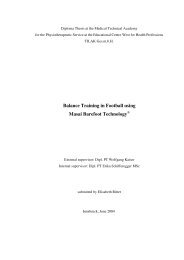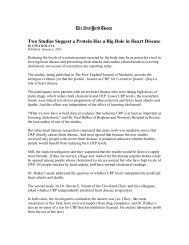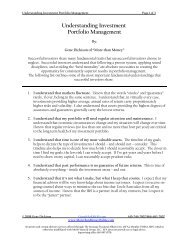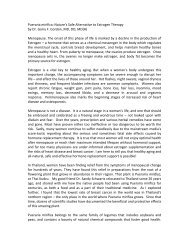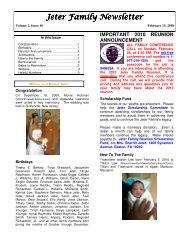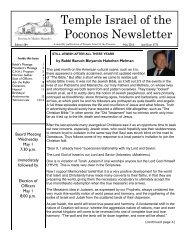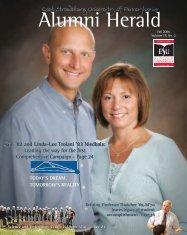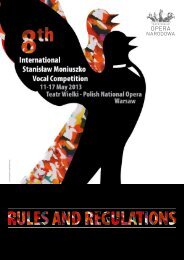Temple Israel of the Poconos Newsletter - Asoundstrategy
Temple Israel of the Poconos Newsletter - Asoundstrategy
Temple Israel of the Poconos Newsletter - Asoundstrategy
You also want an ePaper? Increase the reach of your titles
YUMPU automatically turns print PDFs into web optimized ePapers that Google loves.
Page 4 TEMPLE ISRAEL OF THE POCONOS Edition 567<br />
JEWISH MYSTICISM<br />
In <strong>the</strong> mosaic <strong>of</strong> Jewish history, <strong>the</strong>re was an outpouring <strong>of</strong> hand-copied books<br />
on a variety <strong>of</strong> Judaic topics during <strong>the</strong> 12th and 13th centuries. One <strong>of</strong> <strong>the</strong>se<br />
topics was Jewish mysticism, or <strong>the</strong> Kabbala, and one <strong>of</strong> <strong>the</strong> popular books on<br />
this topic was <strong>the</strong> “Sefer Hasidim” (Book <strong>of</strong> <strong>the</strong> Devout) by Judah <strong>the</strong> Pius. This<br />
book included stories about miracles, angels, spirits, devils, and wandering<br />
souls. In spite <strong>of</strong> its wide appeal, however, its unearthly subject matter made it<br />
controversial between intellectual Jews and gullible Jews.<br />
Since most <strong>of</strong> us are probably unfamiliar with Jewish mysticism, I am approaching this topic<br />
as if <strong>the</strong> congregation asked me three questions: What is Jewish mysticism? What is its source?<br />
What role did it play in Jewish history?<br />
Jewish mysticism may be defined as a spiritual movement originating in Europe during <strong>the</strong><br />
medieval period and dealing with <strong>the</strong> creation <strong>of</strong> <strong>the</strong> world and with spiritual creatures such<br />
as angels, devils, and <strong>the</strong> soul after death. The Kabbalistic <strong>the</strong>ory also held that G-d created<br />
<strong>the</strong> world by releasing Ten Seforim, or spiritual radiations, each with a specific function. The<br />
most popular <strong>of</strong> <strong>the</strong> Kabbalistic books was <strong>the</strong> “Zohar” (Brilliance) which appeared in Spain<br />
in 1250. According to legend, it was dictated by angels to Simon ben Yohai, and it revealed <strong>the</strong><br />
hidden meanings <strong>of</strong> <strong>the</strong> Torah. These books, toge<strong>the</strong>r with many o<strong>the</strong>r religious works, inspired<br />
medieval Jews to regard <strong>the</strong>mselves as a holy people who were devoted to sustaining<br />
<strong>the</strong>ir Jewish tradition in an antagonistic Christian Europe.<br />
Although <strong>the</strong> Kabbala is part <strong>of</strong> <strong>the</strong> Jewish tradition, its content is regarded as dangerous for<br />
those who misunderstand its purpose, which is “Making <strong>the</strong> self into a better, more expanded<br />
individual, more transcendental, more attuned to <strong>the</strong> essence and roots <strong>of</strong> one’s soul.” In<br />
short, it is to entwine heaven and earth and to involve humankind in this spiritual journey.<br />
Whe<strong>the</strong>r medieval Jews lived in villages or ghettos, <strong>the</strong>y were never safe from Christian<br />
rivalry and hostility ever since <strong>the</strong> Council <strong>of</strong> Nicaea (325 C.E.), which <strong>of</strong>ficially separated<br />
Jews from Christians. This troubled situation led to outbreaks <strong>of</strong> physical and verbal anti-<br />
Semitism, which forced Jewish communities to defend <strong>the</strong>mselves as best <strong>the</strong>y could. They<br />
relied on Holy Scripture and on <strong>the</strong> Kabbala to maintain <strong>the</strong>ir stalwart faith in Judaism.<br />
They were bold enough to engage in public disputations with Christian clergymen to prove<br />
that Judaism was <strong>the</strong> superior religion. In an extraordinary example <strong>of</strong> religious fervor, a<br />
mystic Jew named Abraham Abulafia traveled to Rome in 1280 with <strong>the</strong> intention <strong>of</strong> converting<br />
<strong>the</strong> Pope to Judaism!<br />
As we see, Jewish mysticism has its roots in <strong>the</strong> Torah, and appealed to intellectual Jews who<br />
were inquisitive about <strong>the</strong> nature <strong>of</strong> God and <strong>the</strong> spiritual creatures that inhabit heaven and<br />
earth. The story that three rabbis suffered death while studying <strong>the</strong> Kabbala served to caution<br />
Jews about <strong>the</strong> danger <strong>of</strong> pursuing this esoteric subject. Consequently, it is believed that only<br />
mature, learned Jews are qualified to study <strong>the</strong> mysteries <strong>of</strong> <strong>the</strong> Kabbala.<br />
-Norman Gelber-



